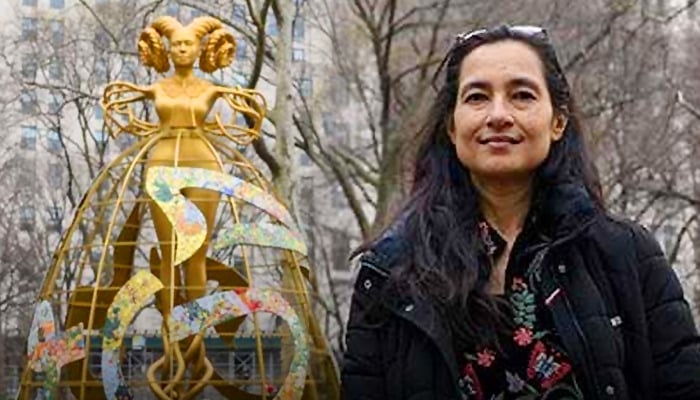Pakistani-American Artist ‘Creates History’ in New York Court

A Pakistani-American artist has made history by adding a female statue to the plinths on top of a New York courthouse.
The building, located in Manhattan’s Flatiron District, has had ten plinths since its opening in the late 19th century and until now, all of the statues depicted men.

Shahzia Sikander, 53, created the eight-foot-tall female statue, which is covered in gold, to raise awareness about the lack of representation of women in public statues in the United States.
The statue replaces the former statue of the Byzantine emperor Justinian and depicts a feminine figure emerging from a pink lotus flower, with her hair styled in spiralling horns.

Sikander titled the work “NOW” to acknowledge recent events that have been seen as a setback for women’s rights.
The Supreme Court’s recent overturning of the federal right to abortion, as well as the death of liberal icon and Supreme Court justice Ruth Bader Ginsburg, has led to a rightward shift in the court. The statue also features Ginsburg’s signature lace collar.
The artist, who was born in Lahore and has lived in the United States for the past 30 years, believes that representation matters and that placing the statue on the roof of a courthouse allows for a unique conversation about women’s representation in patriarchal spaces like law and art.

Sikander believes that gender bias still creates barriers for women, despite years of struggles for legal, socio-economic and political equality.
The statue is a temporary addition to the courthouse and will be part of Sikander’s exhibition “Havah… to breathe, air, life,” which also features an 18-foot sculpture called “Witness” in Madison Square Park.
Both works will be on display until June. Sikander hopes that the statue will bring attention to the discrimination that women continue to face, including unequal access to health and education, economic opportunities, gender-based violence, race and class discrimination.















